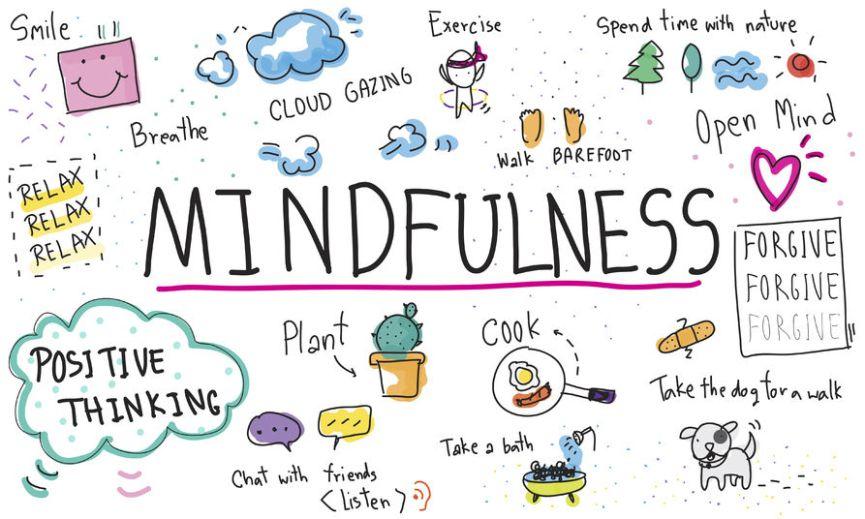In the fast-paced whirlwind of modern life, finding a moment of peace can feel like an elusive dream. Yet, nestled within the chaos is a powerful tool that promises tranquility: meditation. Establishing a consistent meditation routine can be the key to unlocking a more centered and mindful existence. However, like any worthwhile endeavor, it requires dedication and thoughtful planning. This article offers practical tips to help you weave meditation seamlessly into the fabric of your daily life, transforming fleeting moments of calm into a steadfast practice. Whether you’re a seasoned meditator or just beginning your journey, these insights aim to guide you toward a more harmonious state of being.
Finding Your Ideal Time and Space
Crafting a serene environment is crucial for nurturing a meditation practice that resonates with you. Experiment with different times of the day to uncover when your mind is most at ease and receptive. Early mornings offer a fresh start, while evenings might provide a moment of reflection. Observe your energy levels and mental clarity during these times to determine your personal sweet spot.
When it comes to physical space, choose a location that is both comfortable and free from distractions. You might consider:
- Designating a corner of a room with calming elements like cushions, candles, or plants.
- Creating a minimalist setup that helps focus solely on the practice.
- Exploring outdoor spaces like a garden or park, where nature’s tranquility enhances the experience.
Consistency in both time and space can significantly deepen your practice, transforming meditation from a task into a cherished ritual.
Crafting a Personalized Meditation Schedule
Designing a meditation schedule that resonates with your lifestyle can be a transformative step in cultivating mindfulness. Begin by identifying the times of day when you’re most likely to feel calm and uninterrupted. Early mornings and late evenings are popular choices, but trust your instincts and choose what feels right for you. Consider your energy levels and daily commitments to ensure that your chosen meditation times fit seamlessly into your routine.
- Start Small: Begin with just 5-10 minutes a day to build consistency.
- Be Flexible: Allow room for adjustments as your practice evolves.
- Set Reminders: Use alarms or calendar alerts to prompt your sessions.
- Create a Sacred Space: Dedicate a peaceful spot for your practice to enhance focus.
Embrace the idea that your meditation schedule is a living entity, one that can grow and adapt as you do. Personalizing your approach not only enhances commitment but also deepens your connection to the practice, turning it into a cherished part of your day.

Incorporating Mindfulness into Daily Activities
Integrating mindfulness into your everyday routine can transform mundane tasks into moments of calm and clarity. Consider these simple yet effective strategies to weave mindfulness into the fabric of your day:
- Mindful Eating: Turn your meals into a sensory experience. Pay attention to the colors, textures, and flavors of your food. Chew slowly and savor each bite.
- Conscious Commuting: Whether you walk, drive, or take public transportation, use this time to focus on your breathing or observe your surroundings without judgment.
- Present-Moment Cleaning: As you clean, concentrate on the physical sensations of the activity. Feel the water on your hands or the brush against the floor, allowing these sensations to anchor you in the present moment.
- Mindful Technology Use: Before checking your phone or laptop, take a deep breath. Be aware of your intentions and the time you spend on devices, ensuring it aligns with your values and goals.
By incorporating these practices, you can transform everyday actions into opportunities for mindfulness, cultivating a more peaceful and focused mindset throughout your day.

Overcoming Common Meditation Challenges
Meditation, while immensely rewarding, often presents several hurdles that can deter even the most dedicated practitioners. One common challenge is the struggle to quiet the mind, which can feel like trying to tame a restless monkey. Instead of resisting these thoughts, acknowledge them and gently redirect your focus to your breath or a mantra. Over time, the mental chatter will diminish as your mind becomes more accustomed to stillness.
Another frequent issue is finding the right time and space for meditation. Life’s demands can make it difficult to carve out a dedicated period for practice. Consider these strategies to overcome this obstacle:
- Start with short sessions, gradually increasing as you become more comfortable.
- Incorporate meditation into your daily routine, perhaps as a morning ritual or a way to unwind before bed.
- Create a serene and inviting meditation space, free from distractions, to help signal your mind that it’s time to relax and focus.
By addressing these common challenges with patience and creativity, you can build a resilient and rewarding meditation practice that fits seamlessly into your life.
In Retrospect
As you embark on the journey to cultivate a consistent meditation routine, remember that each moment of stillness is a step towards greater self-awareness and tranquility. Like the gentle unfolding of a lotus, your practice may start small, but with patience and dedication, it will blossom into a powerful force for personal growth. Embrace the rhythm of your breath, the quietude of your mind, and the peace that comes with each session. Let these tips guide you as you weave meditation into the fabric of your daily life, creating a sanctuary of calm amidst the chaos. May your path be illuminated with mindfulness, and may your practice bring you the serenity you seek.
